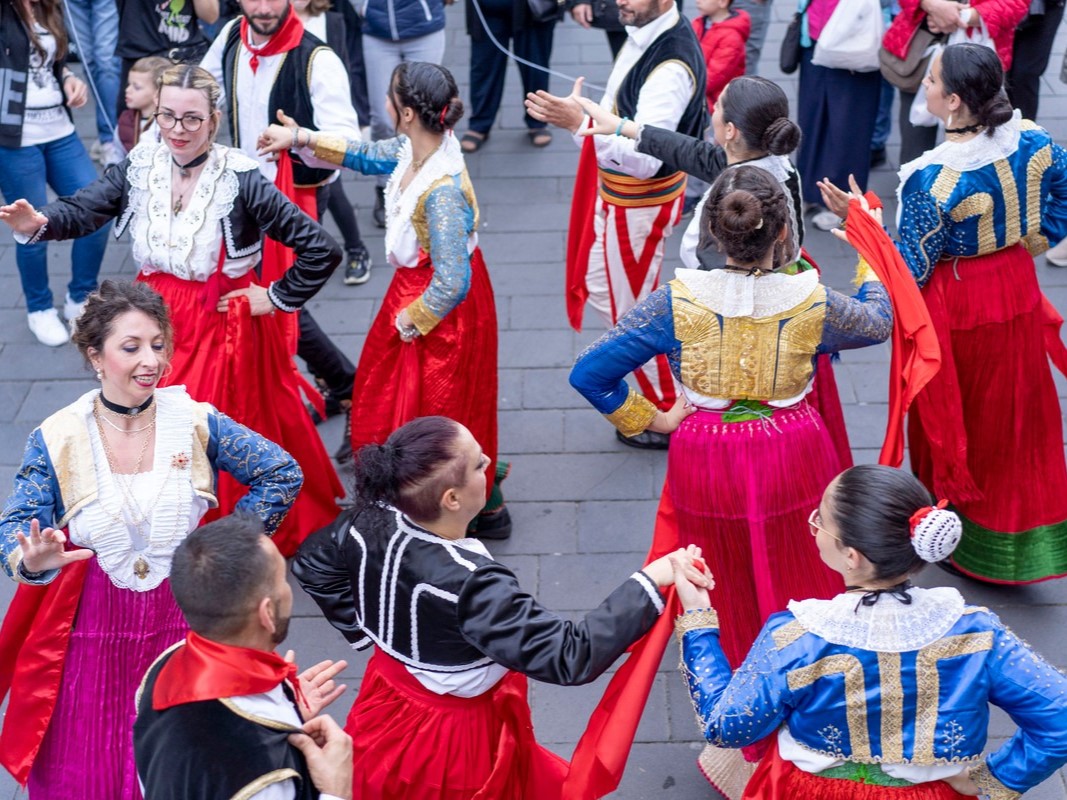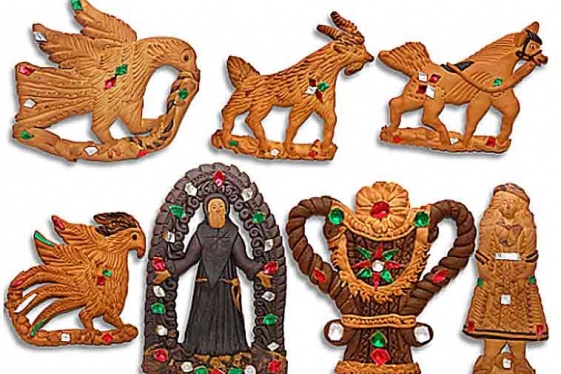

The tarantella calabrese, sometimes called tirantella or in the past u sonu, is a term that encompasses various traditional dance and music styles found throughout the Calabria region of southern Italy.
While it shares a name with other southern Italian tarantellas, the Calabrian version is distinct—especially in its rhythm and performance style. Unlike the pizzica of Puglia, the Calabrian tarantella is not tied to the exorcism rituals of tarantism, but instead is a festive or spiritual community dance.
Although there’s a certain unity to the way the tarantella is danced and played across Calabria, each area has developed unique forms and local expressions. For example, there’s the libera from the Catanzaro area, sonu a ballu from the Aspromonte mountains, the zumparieddu from the Sila plateau, and the viddanedda from the Reggio Calabria area. Styles also vary by gender and purpose—fimminina (feminine), masculina (masculine), or libera (free-form).
Ethnomusicologists trace the origins of the Calabrian tarantella to ancient Greek dances, rather than the Latin or medieval roots of the Neapolitan tarantella or the trance-like movements of the pizzica. The Greek influence is especially evident in the way the body moves—upright, centered at the waist, and unconstrained by formal choreography. This “dance of the earth” is deeply symbolic and rooted in freedom of expression.
Traditionally, the Calabrian tarantella is a partner dance—performed by men and women, or even two people of the same sex—inside a circle called the ròta (or “wheel”). Musicians also join this circle, and the rhythm they play defines the tempo and tone of the dance. Overseeing the rotation of dancers is the mastru i ballu (dance master), who manages the flow of participants and helps maintain the energy and spirit of the event. Movements are based on triplet steps, and the arm gestures differ for men and women: men may display courting or dueling movements, while women hold symbolic poses referencing fertility.
Over the centuries, this dance has become a powerful social ritual, performed during important community events such as religious festivals, weddings, and local fairs. The tarantella became more than a dance—it was a way to affirm identity, share space, and celebrate life.
The instruments traditionally used include the zampogna (a type of bagpipe), later replaced by the organetto (a diatonic accordion), accompanied by tambourines. In some regions, flutes and whistles were used, and in areas like Locride and Monte Poro, the Calabrian lyre still plays a role.
By the 20th century, the social function of the tarantella began to fade, surviving mostly in places like Aspromonte, Locride, and the Pollino area. But even today, in these strongholds, the dance is rich with meaning—same-gender duets may symbolize challenge or camaraderie, while mixed-gender pairs often represent courtship.
One of the most popular variants is the viddaneddha, especially in the Reggio Calabria province. It’s a courtship dance where the woman plays an active role, a rarity in older traditions. Today, the Calabrian tarantella remains a lively and energetic dance, marked by quick footwork, spirited movement, and often song. It continues to be a proud expression of Calabrian culture, frequently performed at town festivals, food fairs, weddings, and cultural showcases both in Italy and abroad.
You may be interested
-
Mostaccioli: The Calabrese Christmas Gingerb...
Here in our home, one of our Christmas traditions is making gingerbread cookies and one gi...
-
'il Messarggero' tells the story of how a loc...
A Sharpsburg native is paying tribute to his hometown with a documentary highlighting an I...
-
'Nduja, History Of The Calabrese Delicacy
The origins of the Calabrian ‘nduja are not entirely certain, but the most accredited thes...
-
‘A Chiara’ Filmmaker Jonas Carpignano On Craf...
Filmmaker Jonas Carpignano rounds out his Calabrian trilogy with Directors’ Fortnight entr...
-
‘It was a good choice: This US couple say the...
As they celebrated the milestone of their 50th wedding anniversary in Venice, Italy, in Ju...
-
"Calabriamerica". Nasce a Chicago il Grande M...
Spetterà probabilmente al Console Generale d'Italia a Chicago tenere a battesimo, nei pros...
-
"Come Home to Calabria" Event Celebrates Ital...
The Amerigo Vespucci Society (AVS) of Long Branch - New Jersey, the oldest Italian America...
-
"From Calabria to Carnegie: Music for Bread"...
Thursday, May 22, 6 p.m. - Heinz History Center - 1212 Smallman Street - Pittsburgh, PA. F...










